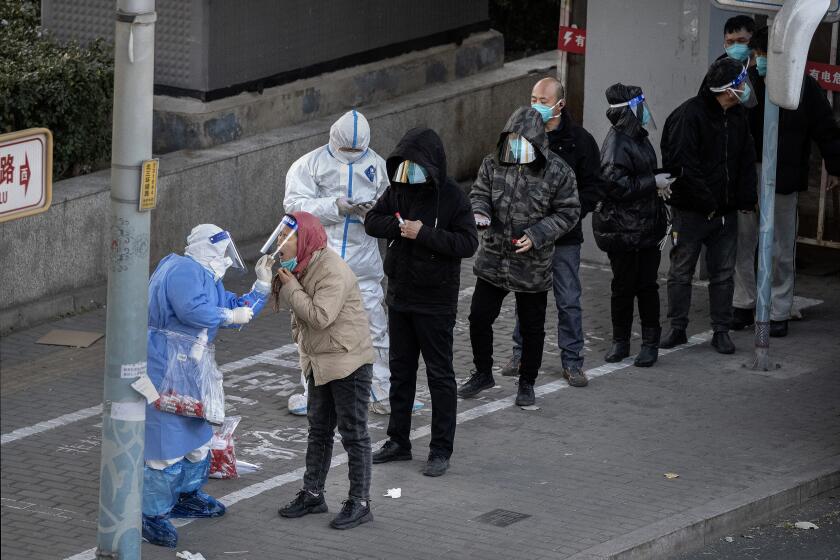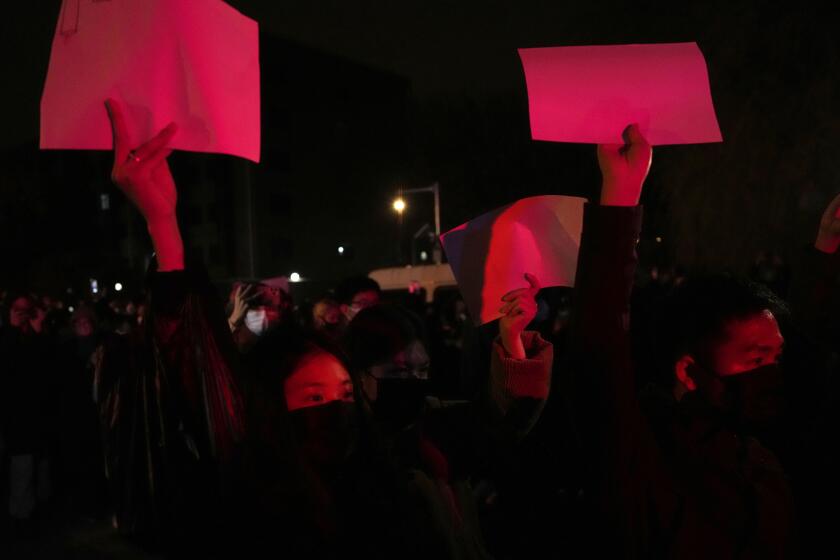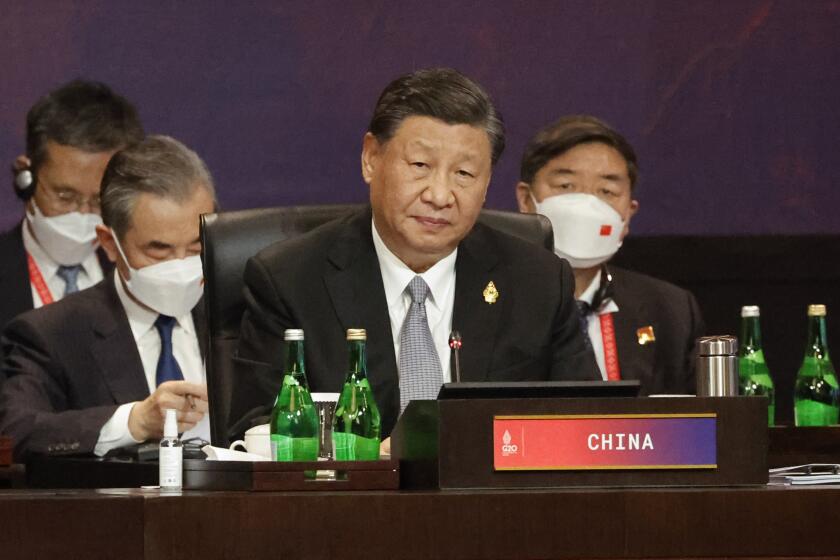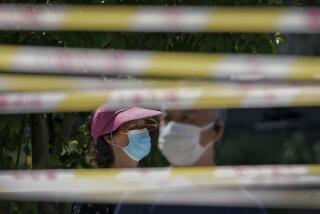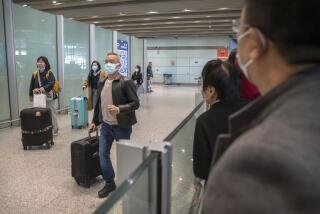In a further shift away from ‘zero COVID,’ China will stop reporting asymptomatic cases
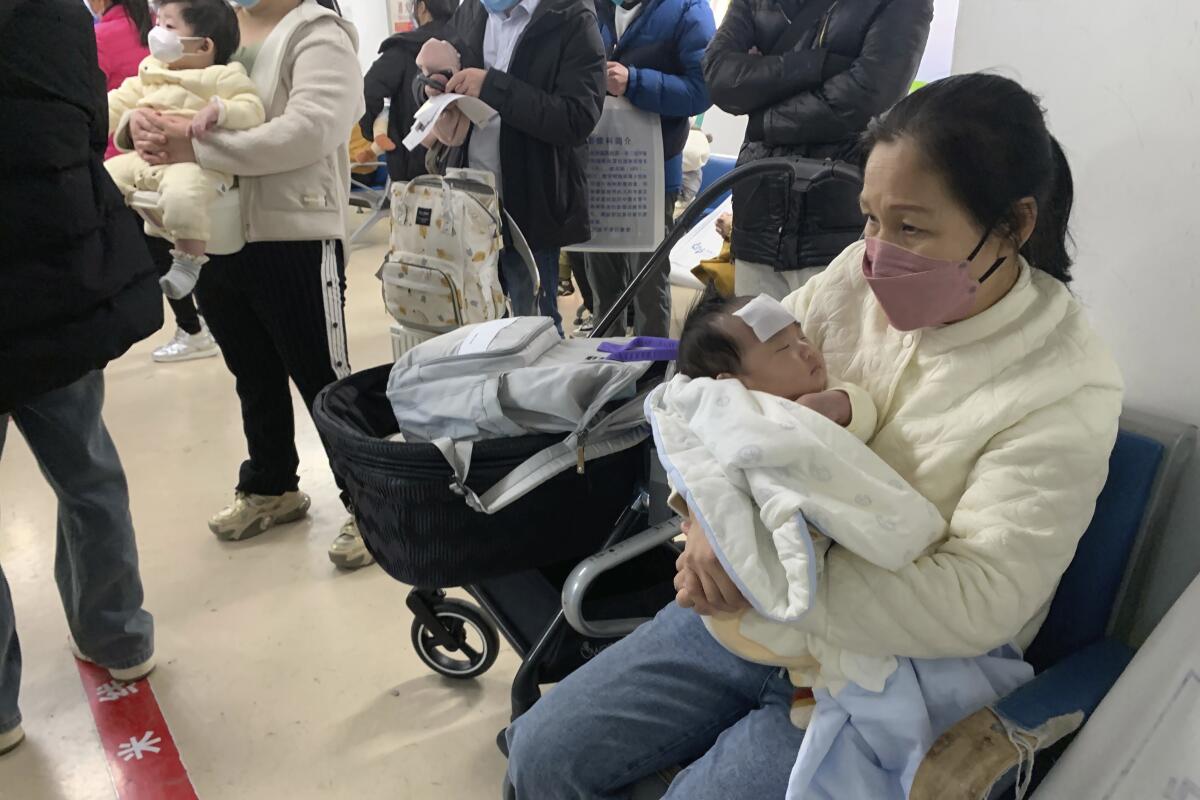
- Share via
BEIJING — China said Wednesday that it would stop reporting asymptomatic COVID-19 cases, calling them “impossible” to track now that mass testing is no longer required — another step in the country’s uncertain exit from some of the world’s strictest anti-coronavirus policies.
China last week announced its most significant easing yet of anti-virus measures and has begun to see what appears to be a rapid increase in new infections, raising concerns that its health system could become overwhelmed as those in other countries did during early COVID waves.
So far, though, many of those newly sick are staying home, and there has been little evidence of a surge in patient numbers. But it’s difficult to get a clear picture of the coronavirus’ spread, and the new reporting rules could make that even harder. Some hospitals have reportedly struggled to remain staffed because of rising infections among their employees.
A notice on the National Health Commission’s website Wednesday said it stopped publishing daily figures on COVID-19 cases where no symptoms are detected since it was “impossible to accurately grasp the actual number of asymptomatic infected persons,” which have generally accounted for the vast majority of new infections.
The only numbers the commission is reporting are confirmed cases detected in public testing facilities where symptoms are displayed. Many people also test at home, and any positive results there would also not be captured.
China’s government-supplied figures have not been independently verified and questions have been raised about whether the ruling Communist Party has sought to minimize numbers of cases and deaths.
Protesters in China are eager to see an easing of “zero-COVID” rules, but health experts warn that doing so could prompt a massive health emergency.
While many governments have long focused on only the more serious cases, the latest move is part of a sea change for China, which has maintained a “zero-COVID” policy that seeks to stamp out all coronavirus transmission.
That included frequent mass testing campaigns, and it meant that anyone who tested positive was isolated in a government facility, even if they had no symptoms. Now people can recover at home if they don’t need medical care.
While many greeted the relaxing of the rules with relief, the rapid shift has also caused some concern — after years during which the Chinese government talked about the virus as a major threat.
“Beijing is really confused right now,” said one resident, surnamed Zhu. “They made a complete 180-degree turn without even going through a transition period.”
First-time protesters in China grapple with how much agency they can wrest from an authoritarian government after the largest demonstrations since 1989.
Despite the easing, the streets of many major Chinese cities have grown eerily quiet as many people stay home — not because they have to, but because they’re worried they’ll contract the coronavirus at a time when social media are lighting up with reports of infections.
With a clean bill of health still required to enter restaurants and some other public venues, many Chinese are also choosing to forgo such pleasures to avoid testing, leaving many establishments shuttered or empty. Several businesses are also having difficulty finding enough staff who haven’t gotten infected.
In the usually bustling streets around the ancient imperial palace complex in the heart of Beijing, Huang Hanxin said he was making good use of the lack of crowds.
“If it was a few years ago, there would be a lot of cars and it would be packed with people here,” said the 19-year-old tourist from the southern city of Guangzhou, standing in front of a gate to the complex formerly known as the Forbidden City. “It’s comfortable to walk around and take photos.”
China’s stringent COVID measures have led to an extremely low number of cases. But protests over the policy are putting President Xi Jinping on the defensive.
By contrast, lines have formed outside some fever clinics in Beijing — the number of which has increased from 94 to more than 300 — and at pharmacies, where cold and flu medications and rapid testing kits are harder to find.
Residents of other major cities such as Guangzhou and Shanghai reached by telephone or messaging app also reported quiet streets. All have modern health infrastructure, but lower-tier cities and rural areas are less prepared to respond and are more likely to become overwhelmed.
Still, there was little evidence of a surge in people being hospitalized.
Inquiries to health hotlines have increased sixfold, according to state media.
News Alerts
Get breaking news, investigations, analysis and more signature journalism from the Los Angeles Times in your inbox.
You may occasionally receive promotional content from the Los Angeles Times.
Without asymptomatic cases being counted, China reported just 2,249 “confirmed” infections Wednesday, bringing the nation’s total to 369,918 — more than double the level Oct. 1. It has recorded 5,235 deaths, compared with 1.1 million in the United States.
Since Tuesday, the U.S. consulates in the northeastern Chinese city of Shenyang and the central city of Wuhan have been offering only emergency services “in response to increased number of COVID-19 cases,” the State Department said.
President Xi Jinping’s government is still officially committed to stopping coronavirus transmission. But the latest moves suggest that the party will tolerate more cases without quarantines or shutting down travel or businesses as it winds down its “zero-COVID” strategy.
Experts warn that there still is a chance the party might reverse course and re-impose restrictions if a large-scale outbreak ensues.
More to Read
Sign up for Essential California
The most important California stories and recommendations in your inbox every morning.
You may occasionally receive promotional content from the Los Angeles Times.
